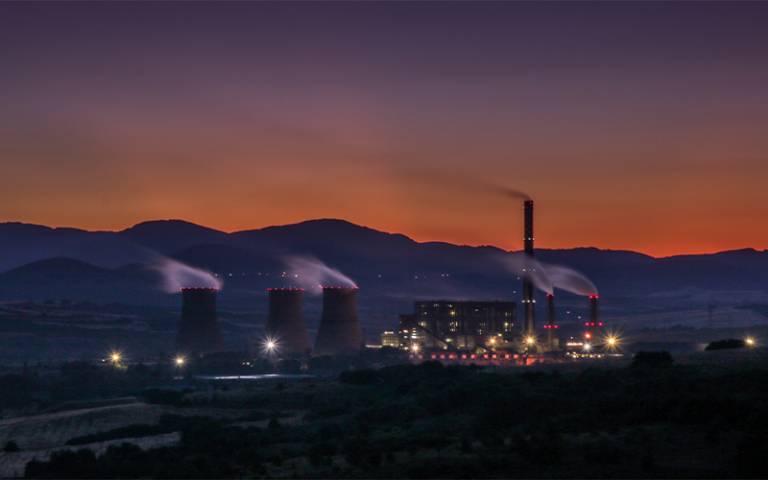New study draws lessons for carbon capture and storage from history of sulphur control

(This article first appeared on the UCL ISR website)
Authors from the UCL Institute for Sustainable Resources (ISR) and the UCL Energy Institute (EI) have published a paper in the journal Nature Communications titled ‘Diffusion of flue gas desulfurization reveals barriers and opportunities for carbon capture and storage’.
The paper analyses the historical diffusion of sulphur control to better understand the potential future uptake of carbon capture and storage. The findings show that the global diffusion of sulphur control technology was very fast at times, especially for retrofit, but required strong regulatory support.
The authors are former Research Associate Stijn van Ewijk, now a Postdoctoral Associate at Yale University, and Associate Professor Will McDowall. The work was conducted in the context of the Horizon 2020 project Innovation Pathways, Strategies and Policies for the Low-Carbon Transition in Europe (INNOPATHS), of which UCL ISR is the overall coordinator.
Context
Pathways for meeting global climate change targets often rely on rapid implementation of carbon capture and storage (CCS). With CCS technology, CO2 may be captured from coal power plants and other sources to then be stored or used. However, CCS is still in an early phase of development and its potential contribution to climate change mitigation is uncertain.
To better understand the likely patterns of diffusion of CCS technology, the authors drew a historical analogy with flue gas desulfurization (FGD), which has been widely adopted in the coal power sector. Based on the global diffusion of FGD, they were able to identify key patterns that may also hold for the diffusion of CSS, insofar the technologies are comparable.
Findings
The paper identifies key patterns in the diffusion of FGD.
- The diffusion of FGD has been very fast at times, especially for technologies that were retrofitted on existent coal power plants.
- FGD was invariably made possible by strong regulatory support that often amounted to picking a technology winner.
- The diffusion of FGD often departed from the classic S-curve of technology adoption because government support increased stepwise.
- The ‘materiality law’ proposed by Kramer and Haigh, which states energy technology diffusion slows after exceeding 1% of world energy, does not hold for FGD.
Future diffusion of CCS is likely to also occur fastest for retrofit, require strong regulatory support, and follow the stepwise changes in regulatory requirements rather than a smooth S-curve. When adopted very widely, it may also evade the ‘materiality’ law.
Though end-of-pipe abatement technology was shown to diffuse rapidly, neither FGD nor CCS can remove all power plant emissions. Climate change mitigation efforts should therefore remain strongly focused on renewable energy technologies.
The study also provides empirical support for energy systems modelling. A comparison showed that the historical diffusion of FGD – per dollar of the economy – rarely outpaced the rates of diffusion of CCS assumed in scenarios for meeting 1.5- or 2-degrees global warming.
Further information
- Read the full paper here with open access.
- The study was funded by the Horizon 2020 project Innovation Pathways, Strategies and Policies for the Low-Carbon Transition in Europe (INNOPATHS)
Photo by Viktor Kiryanov on Unsplash